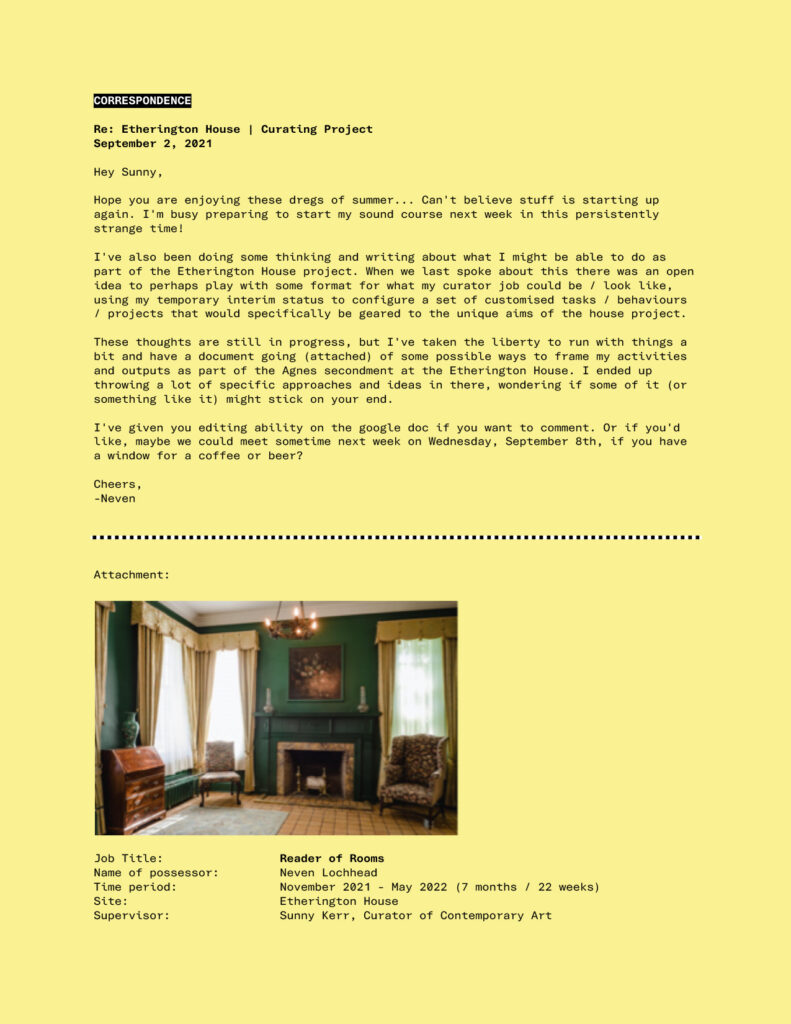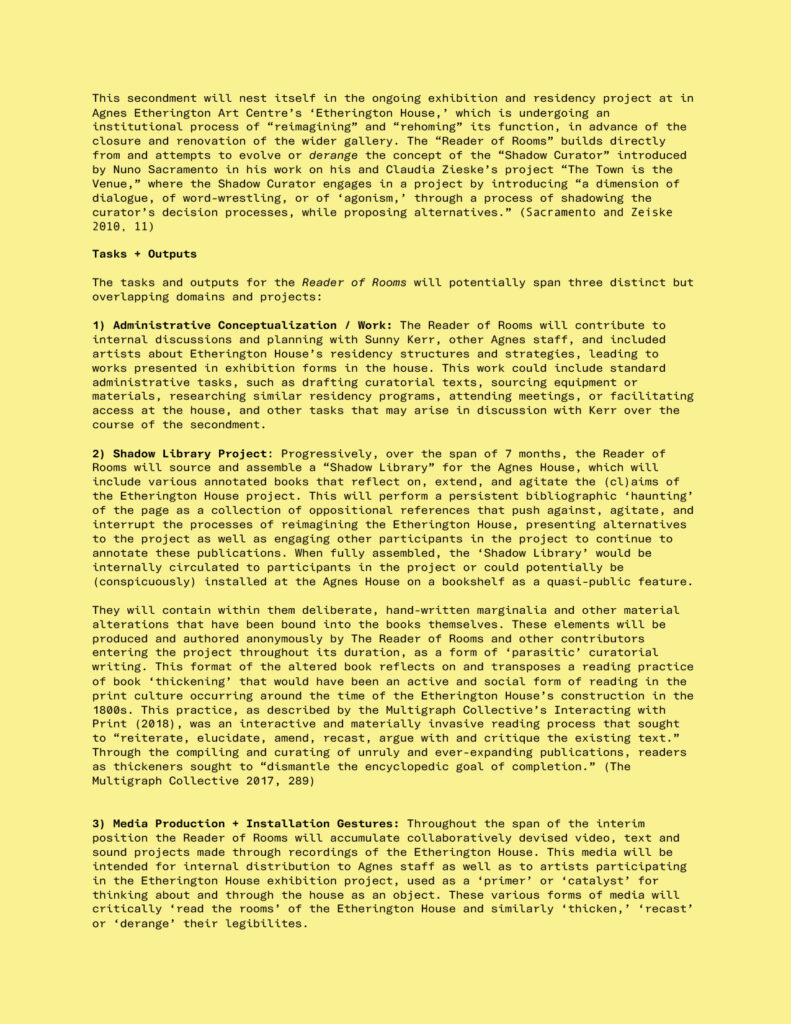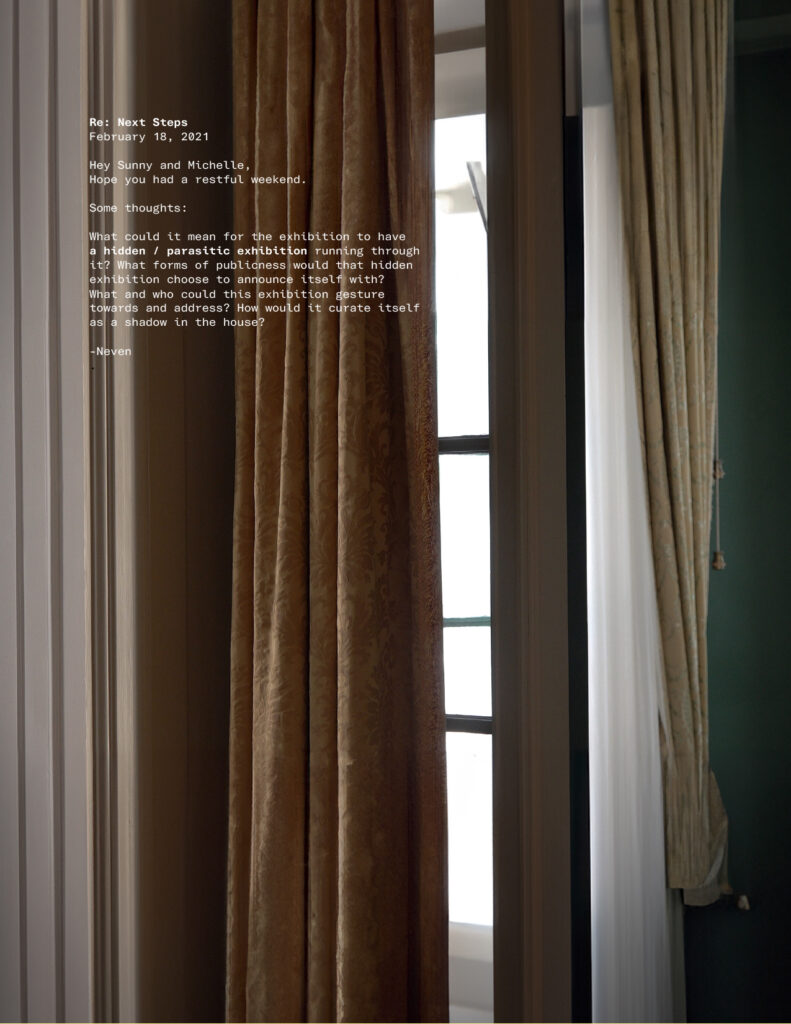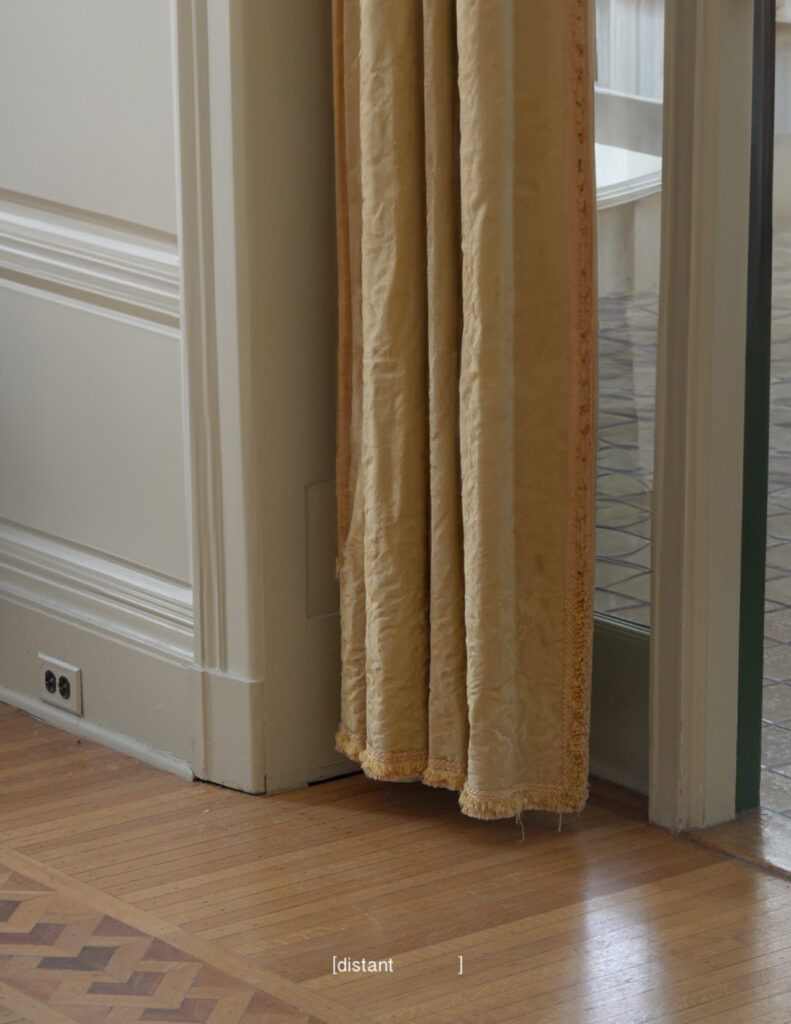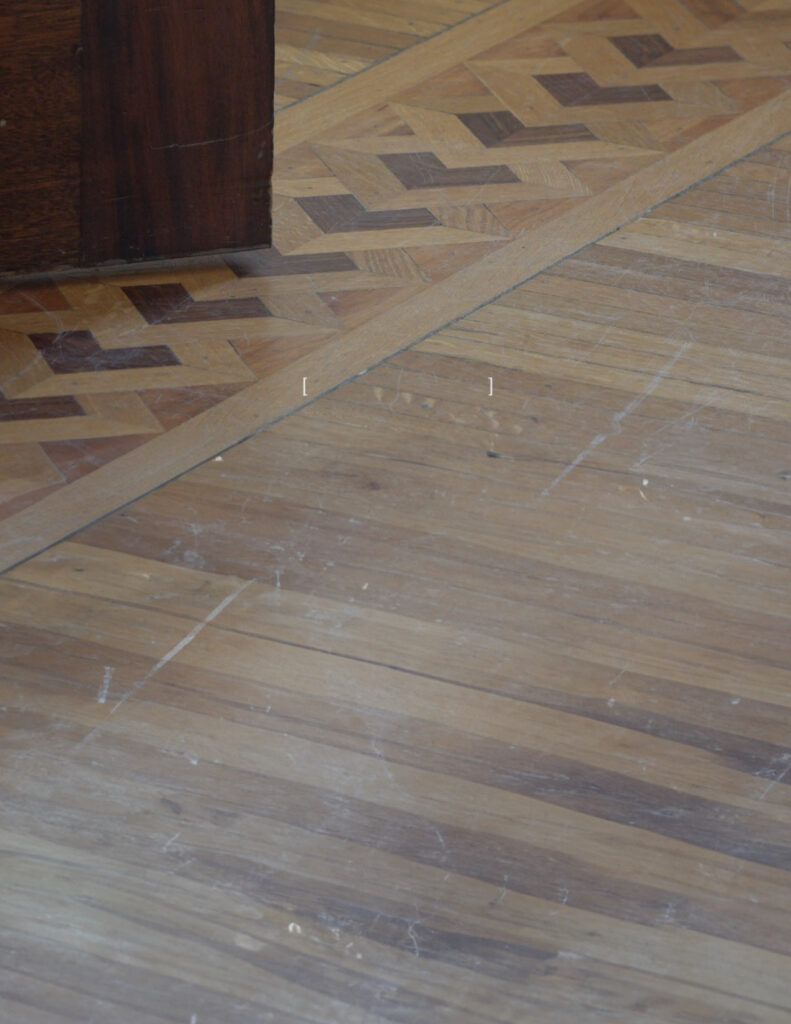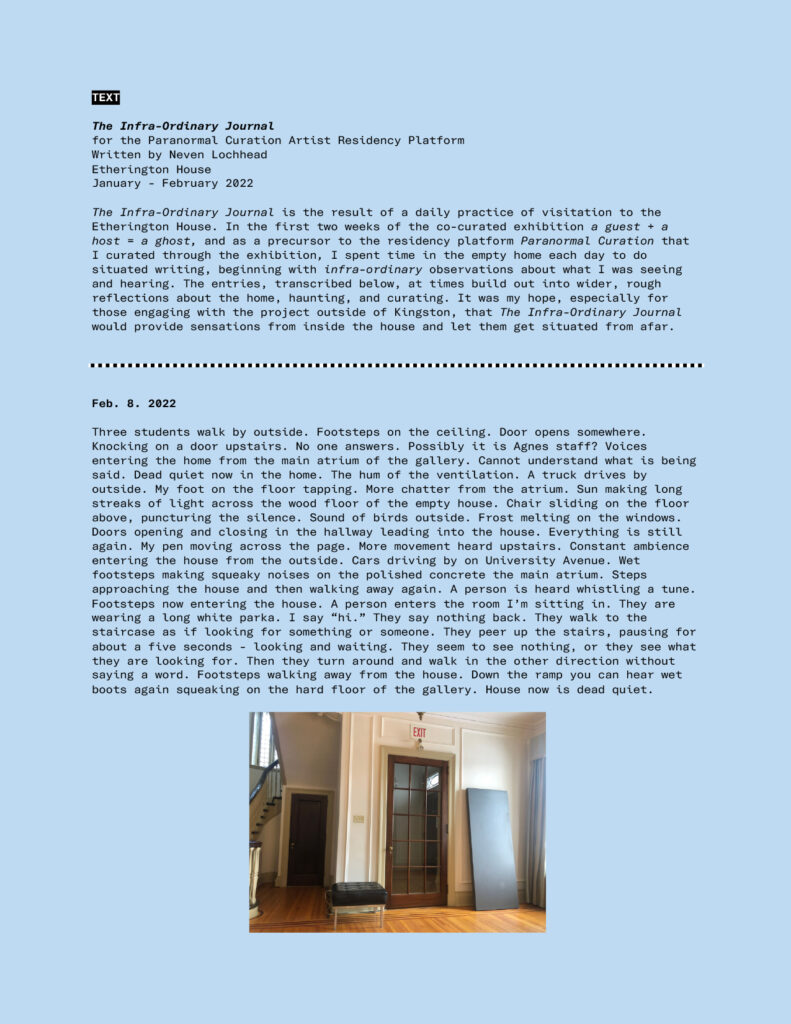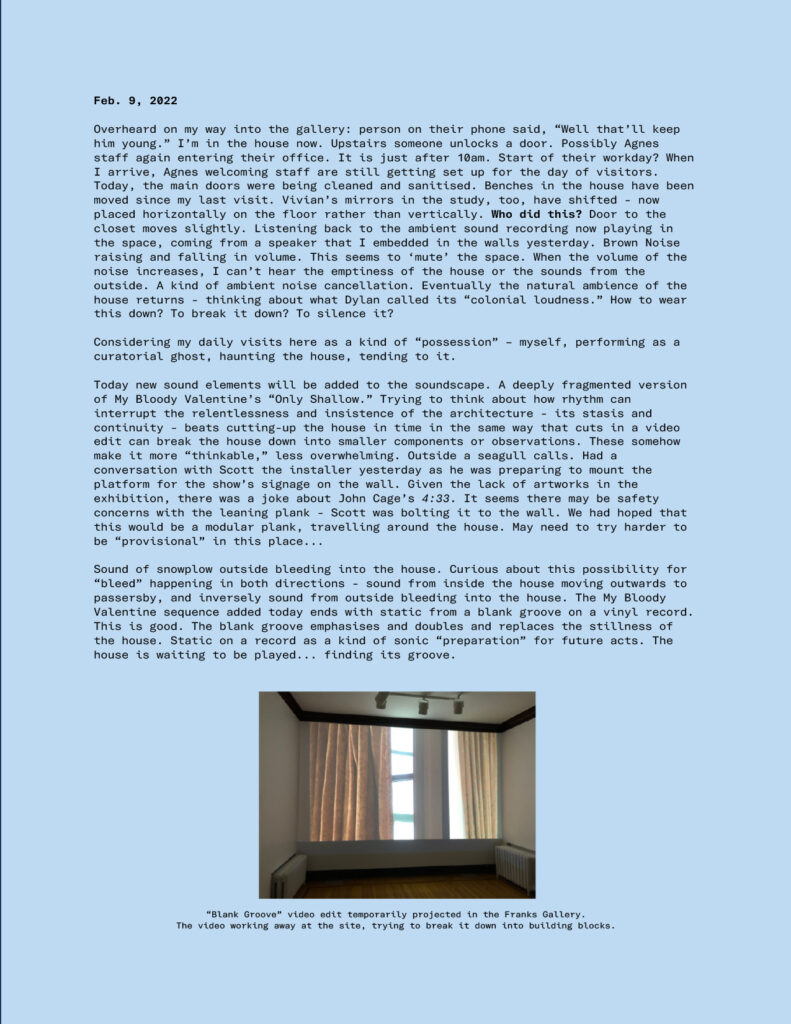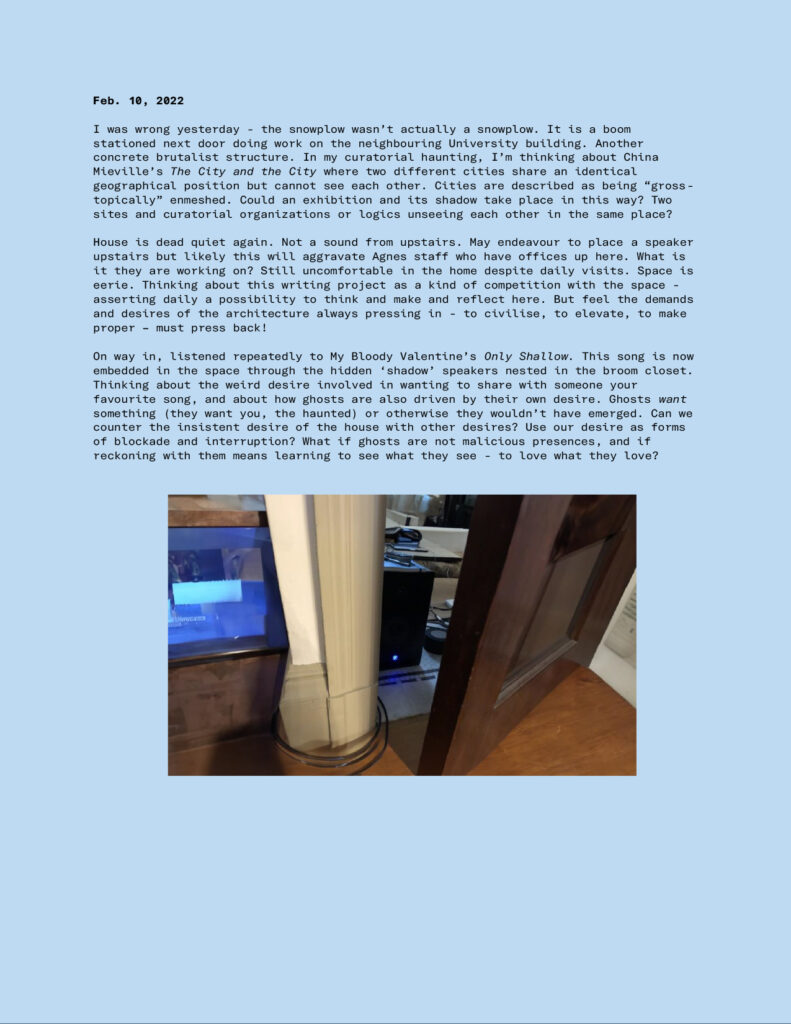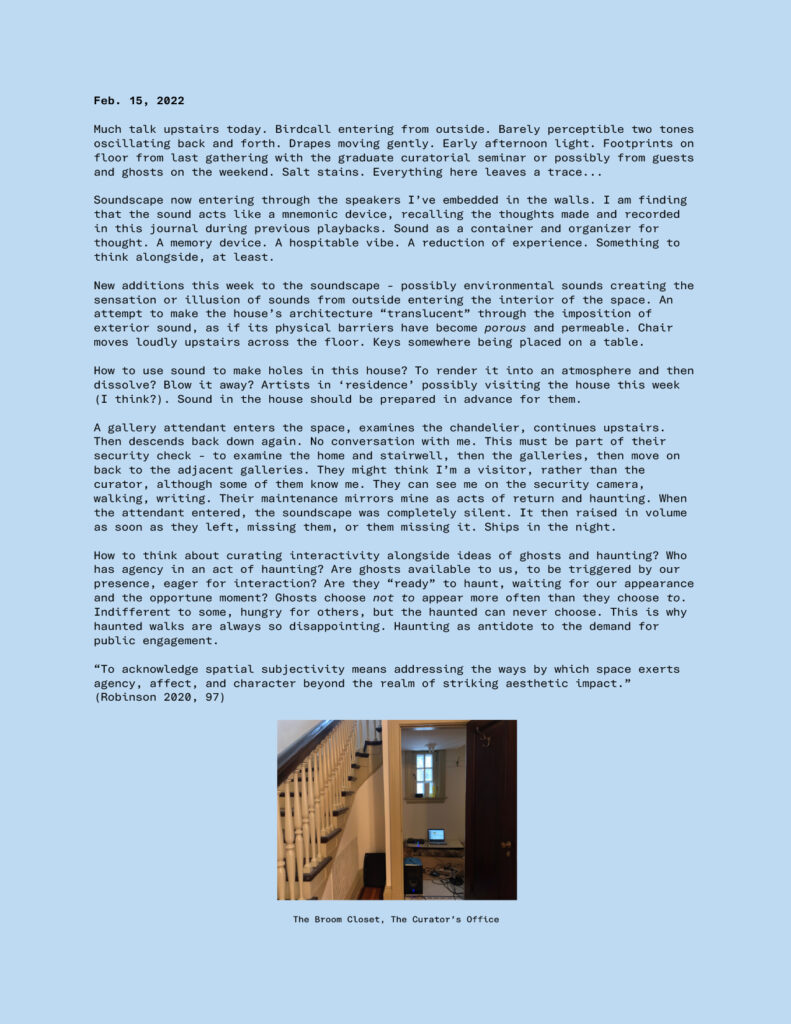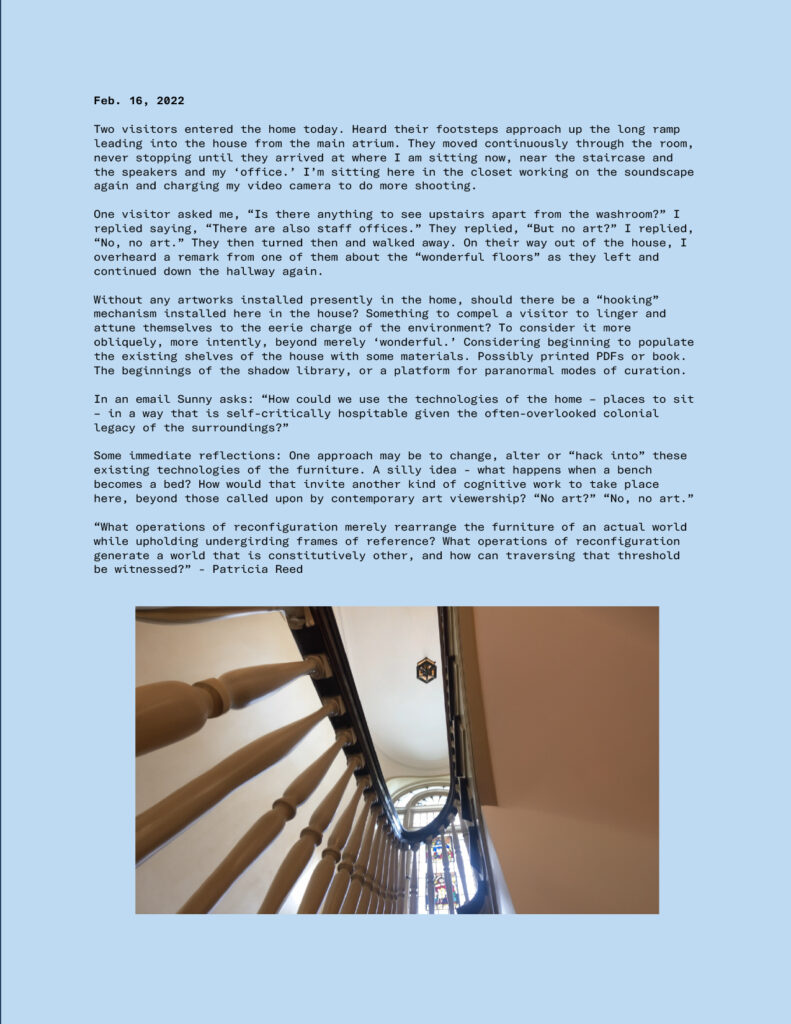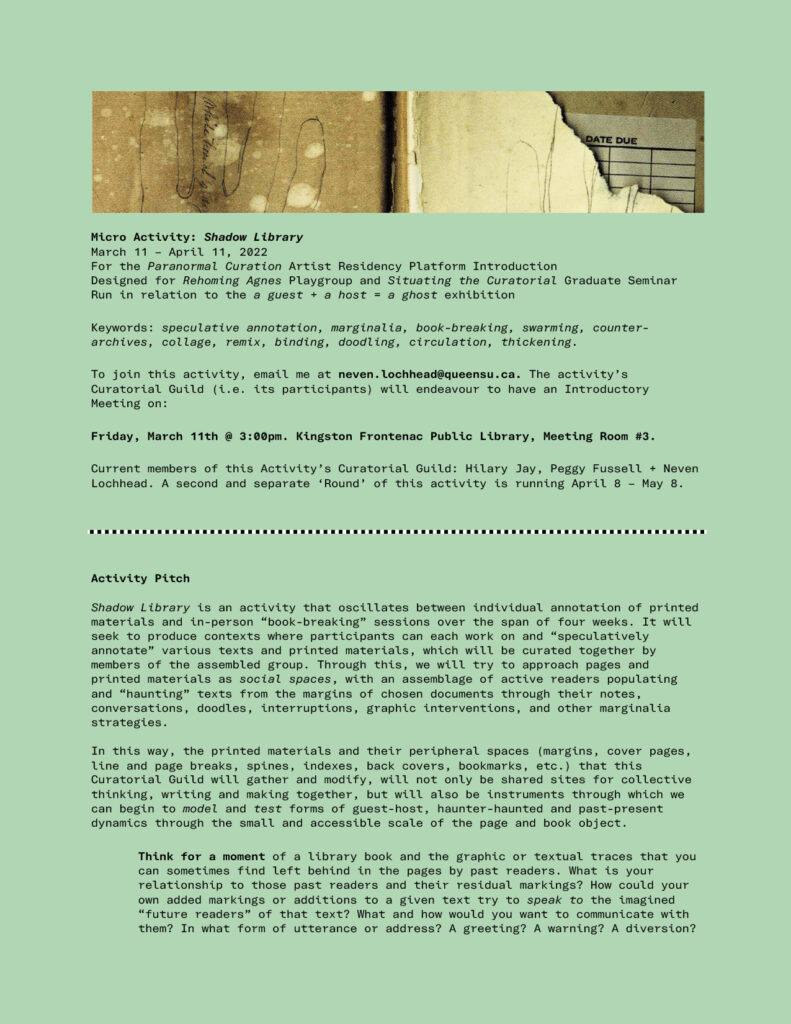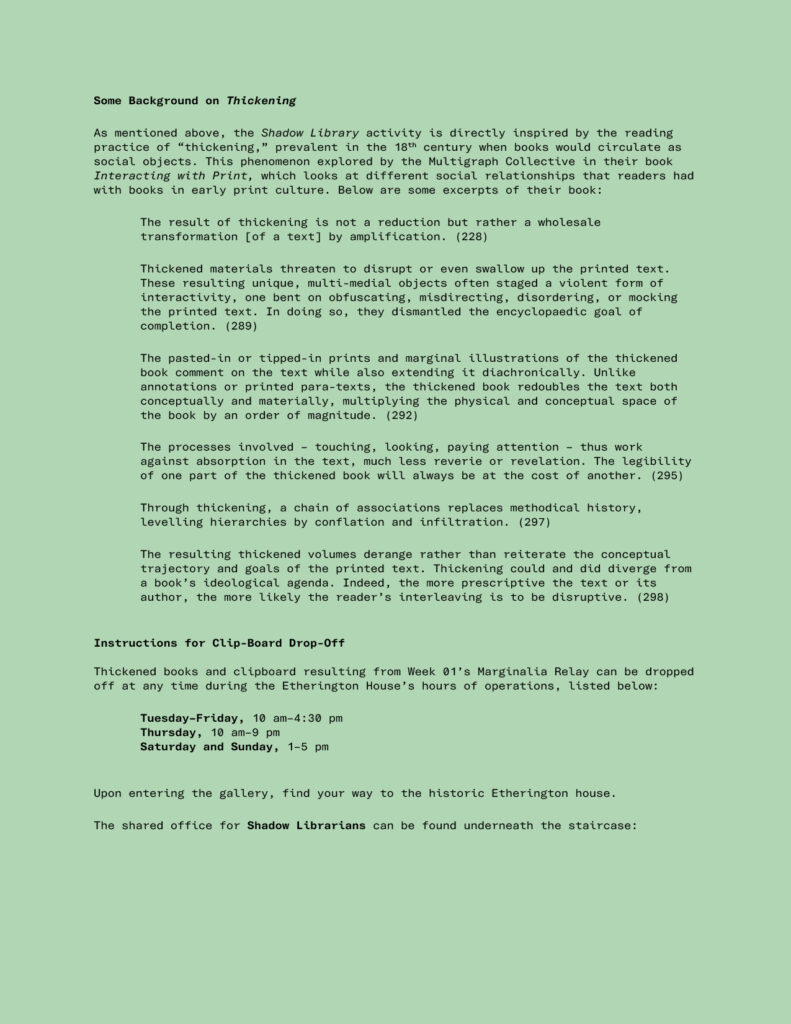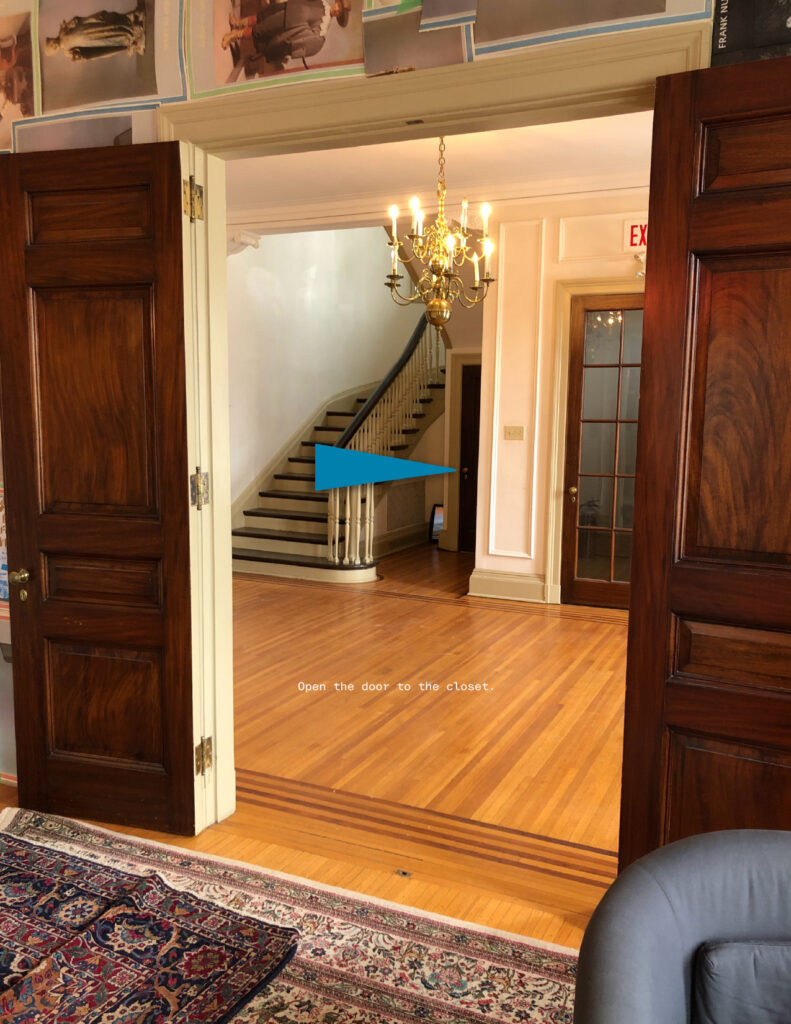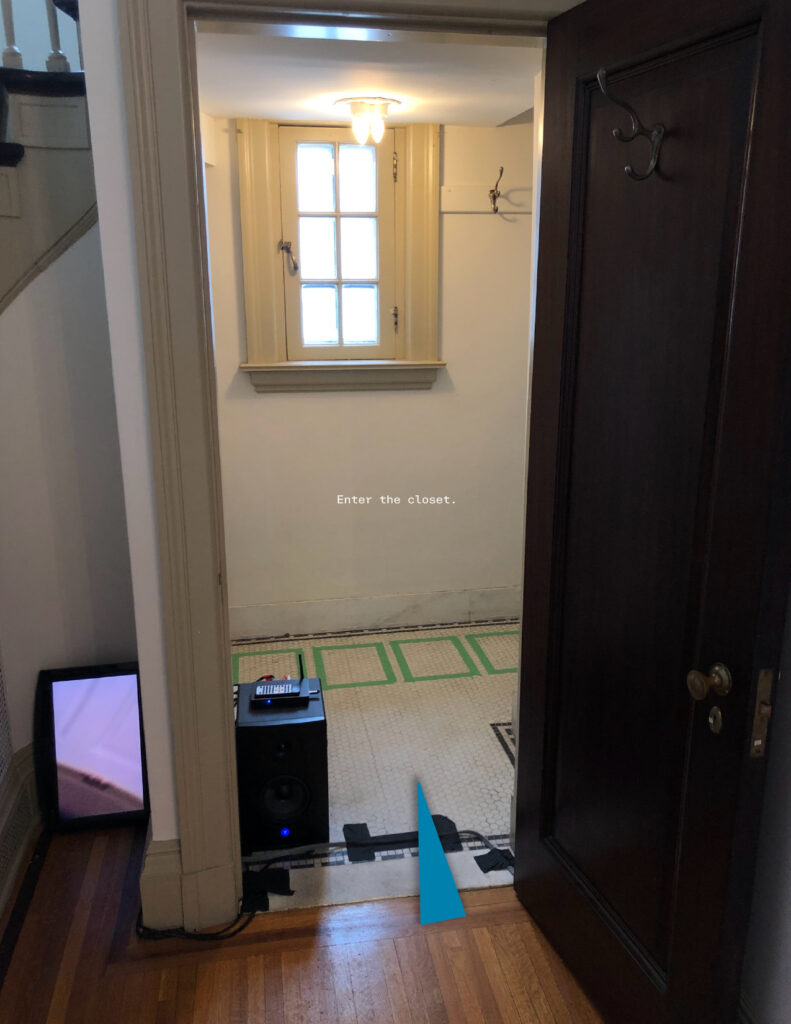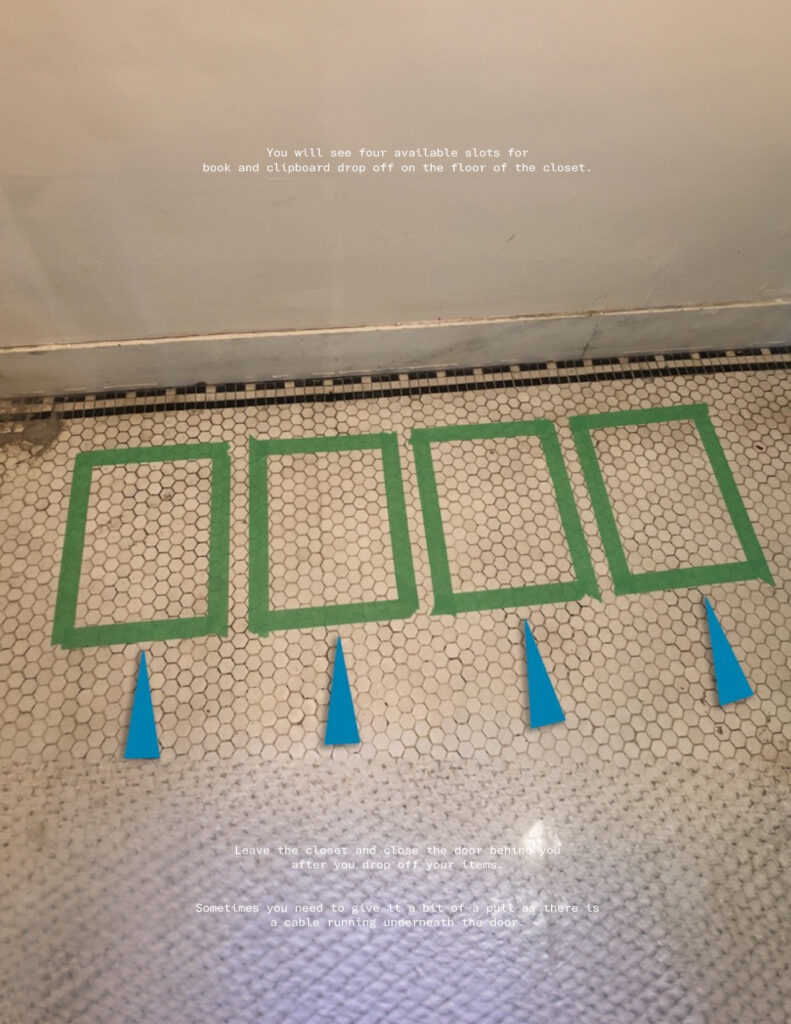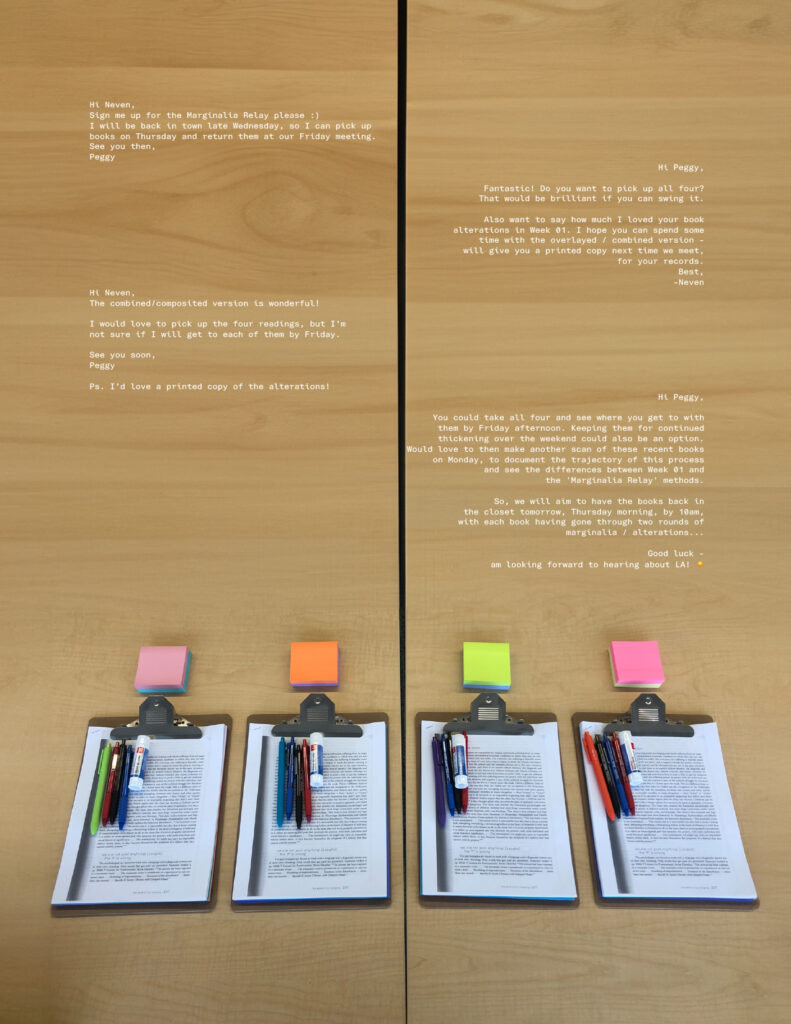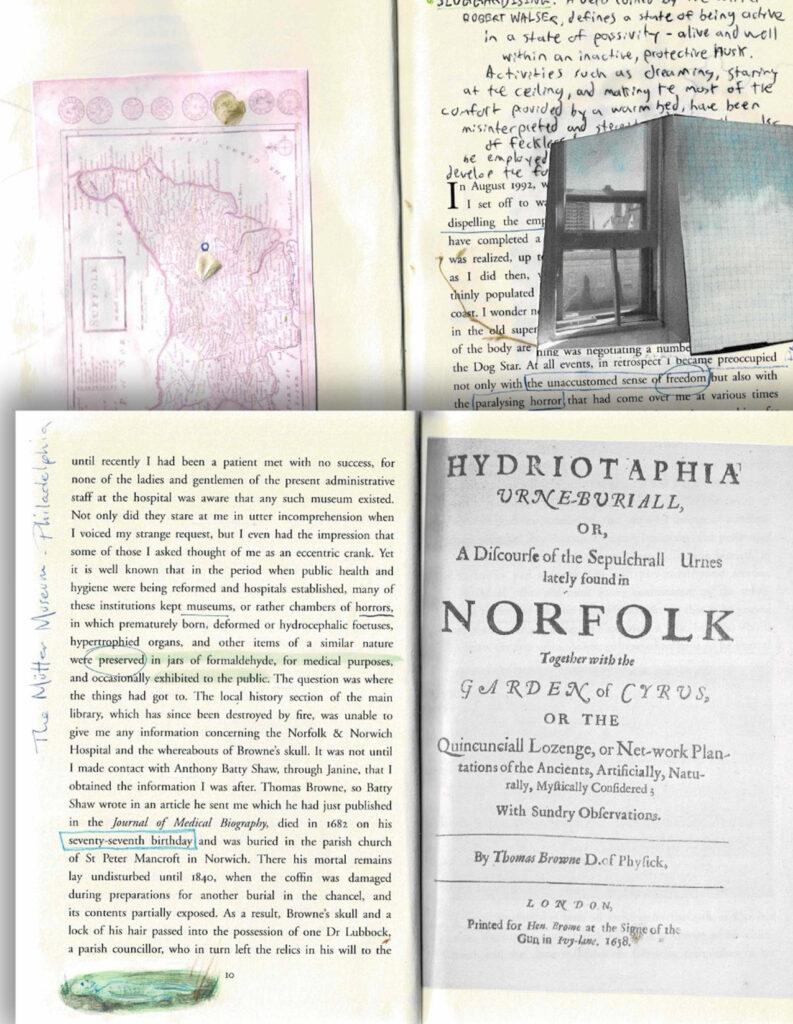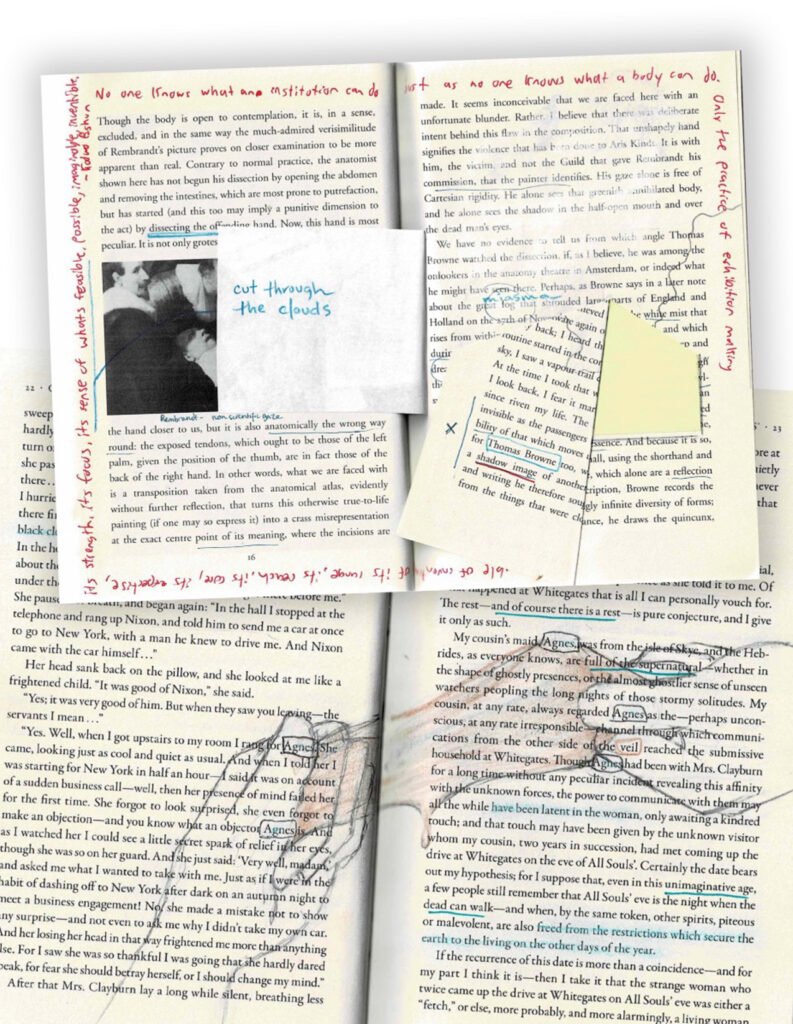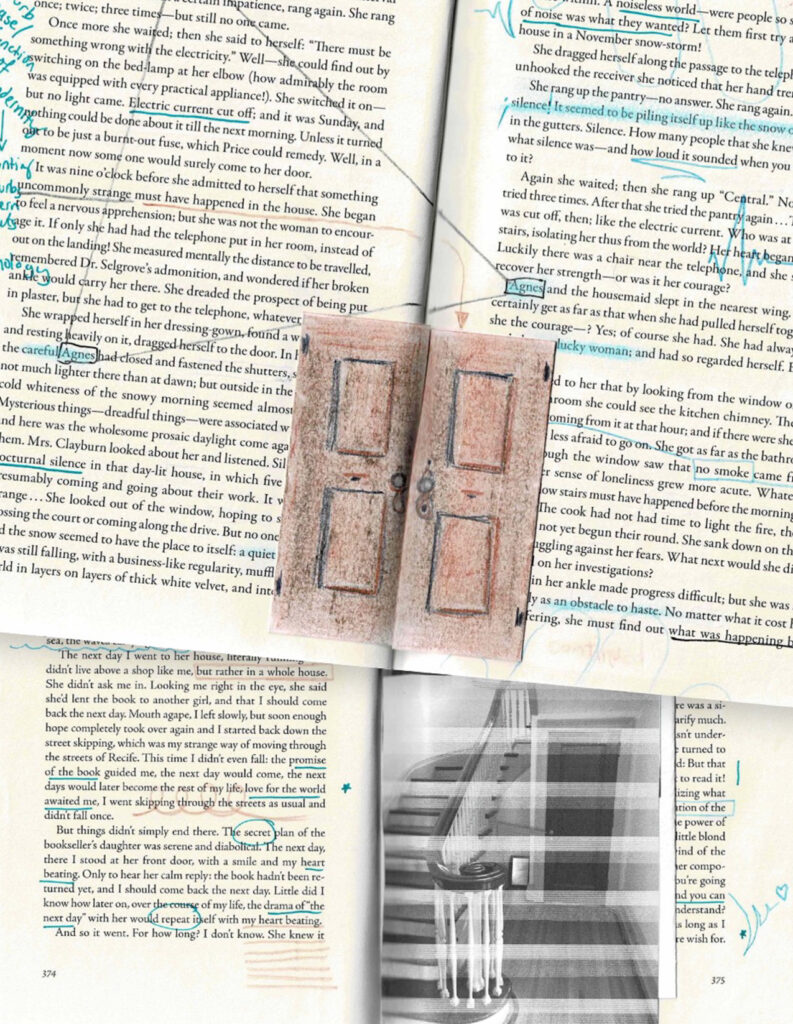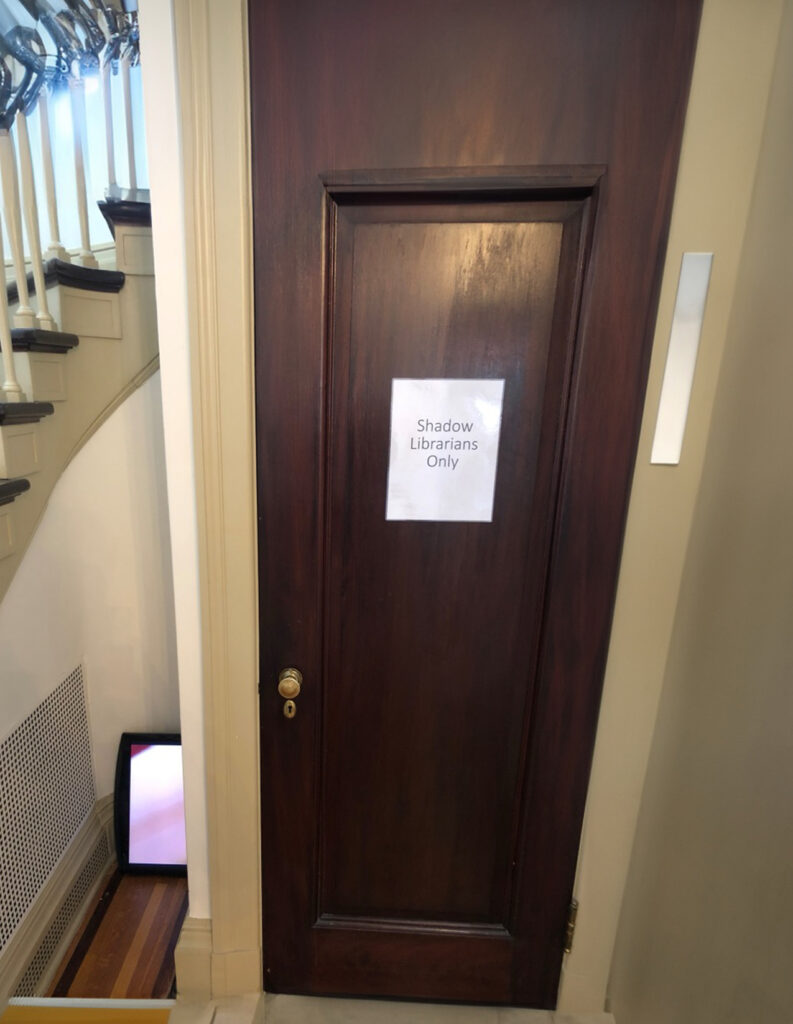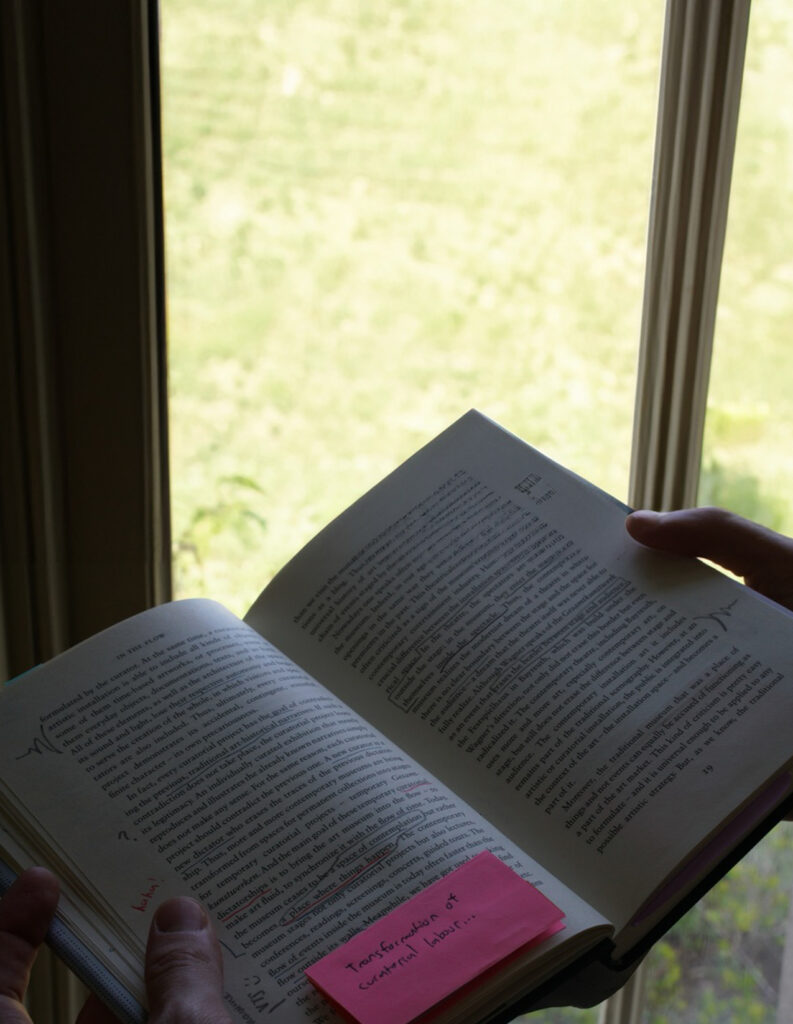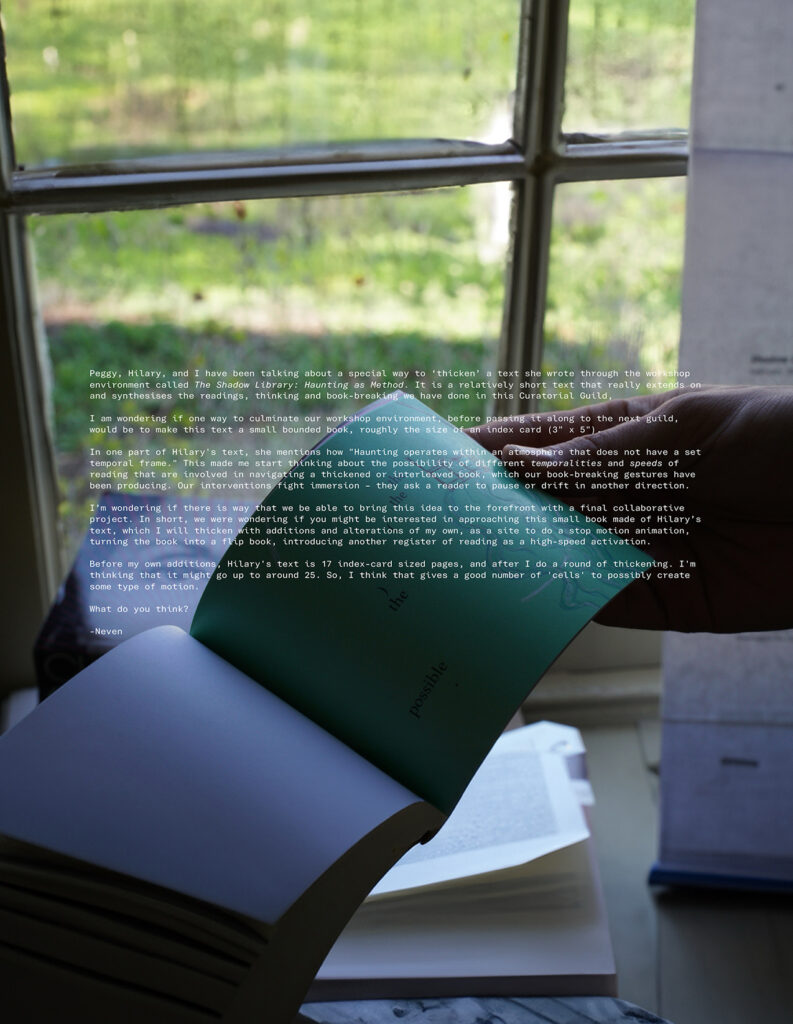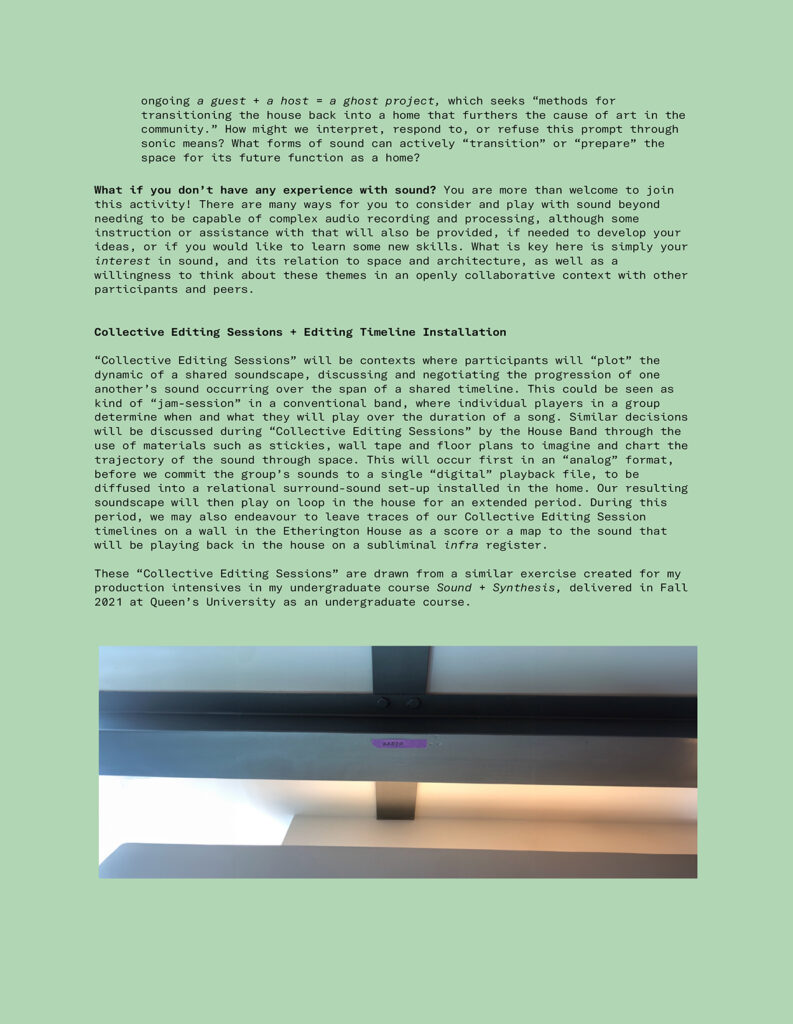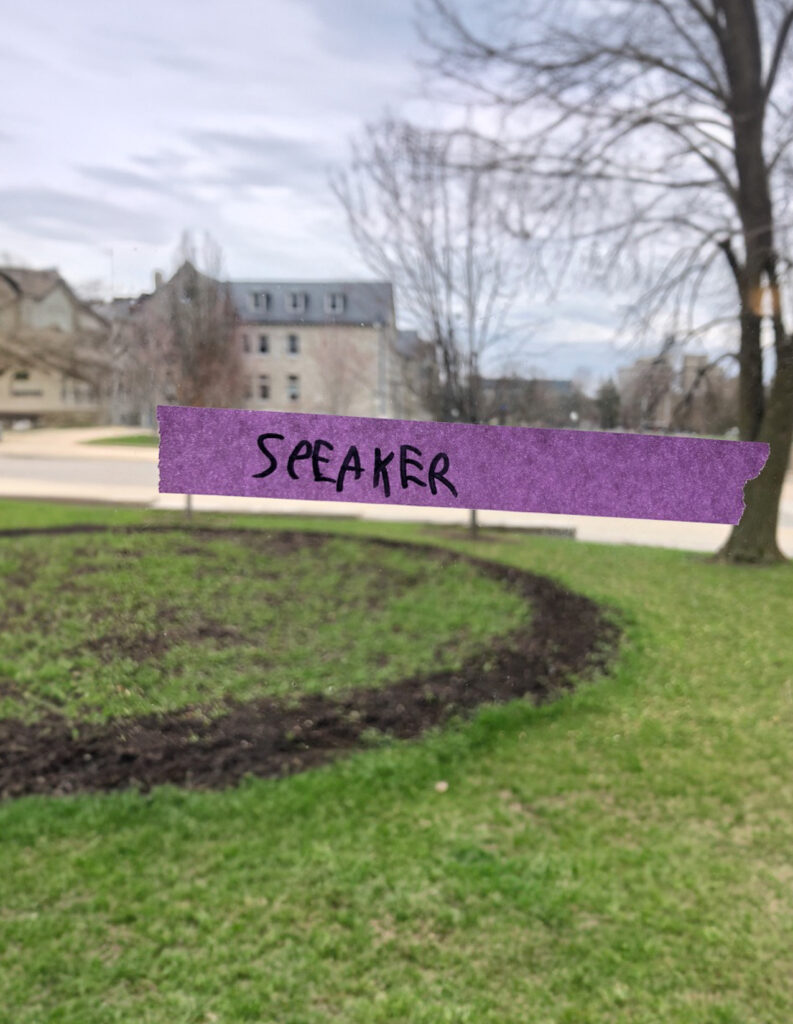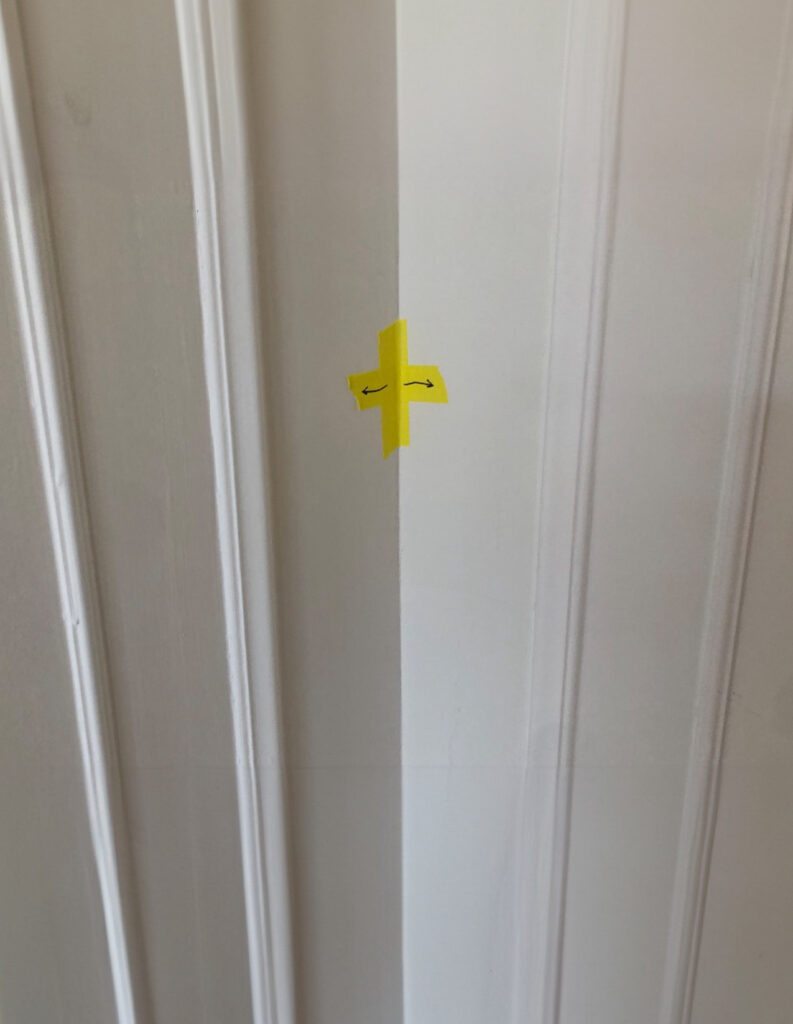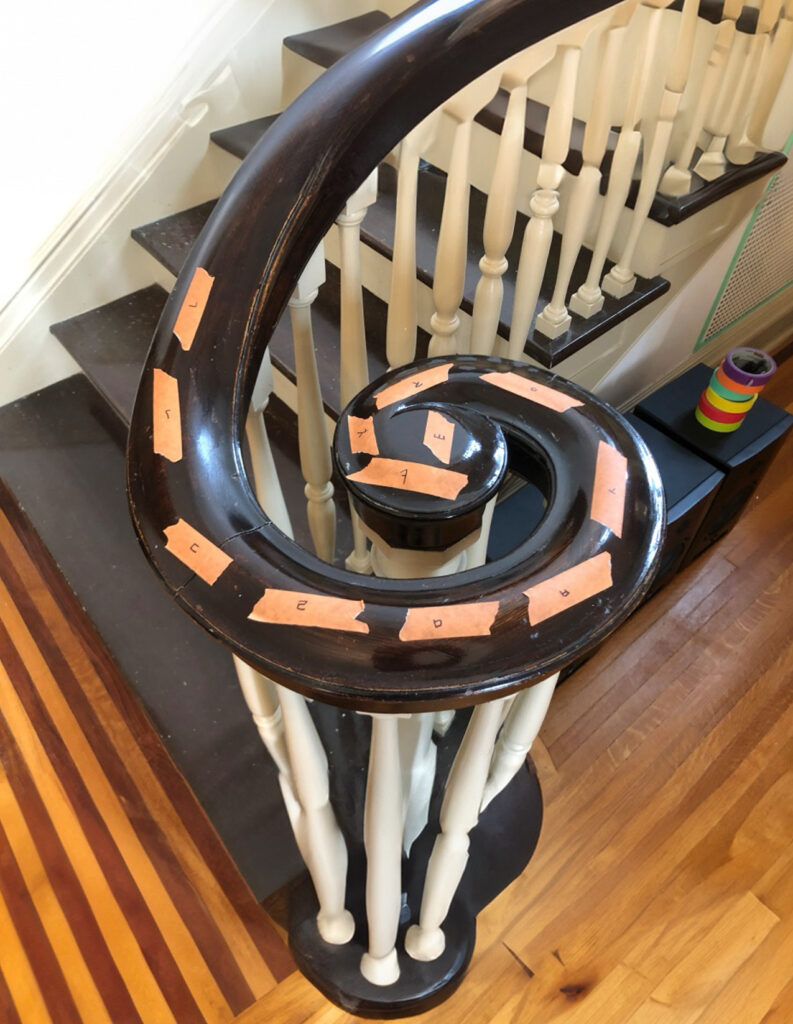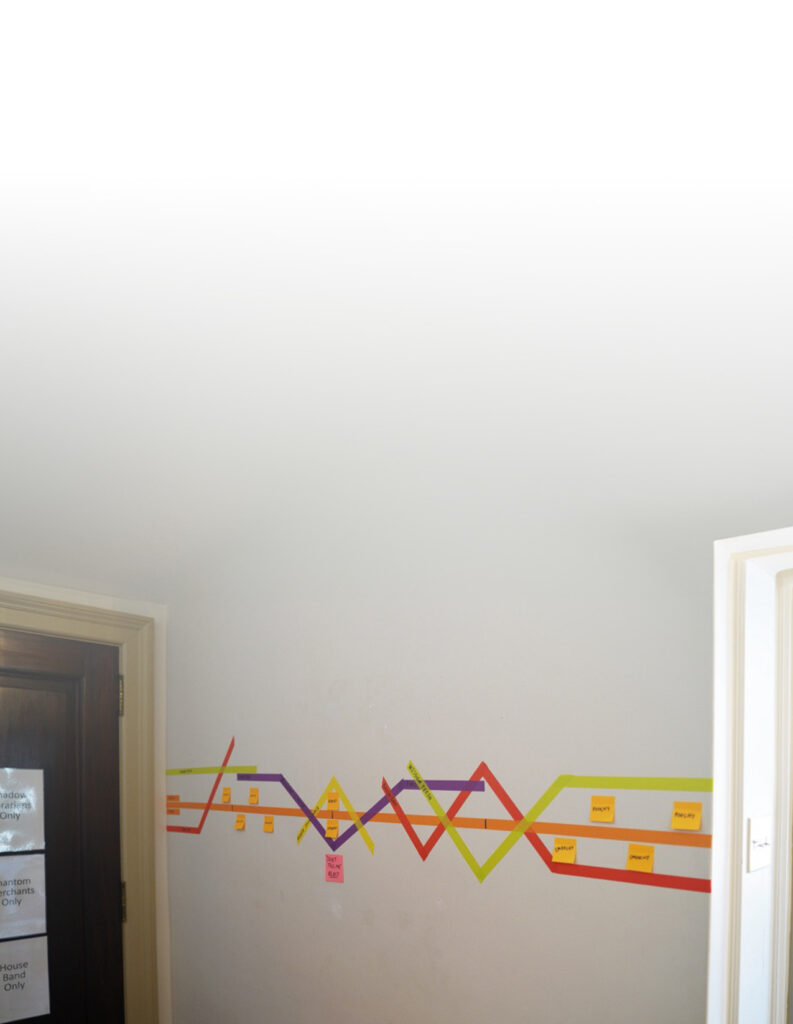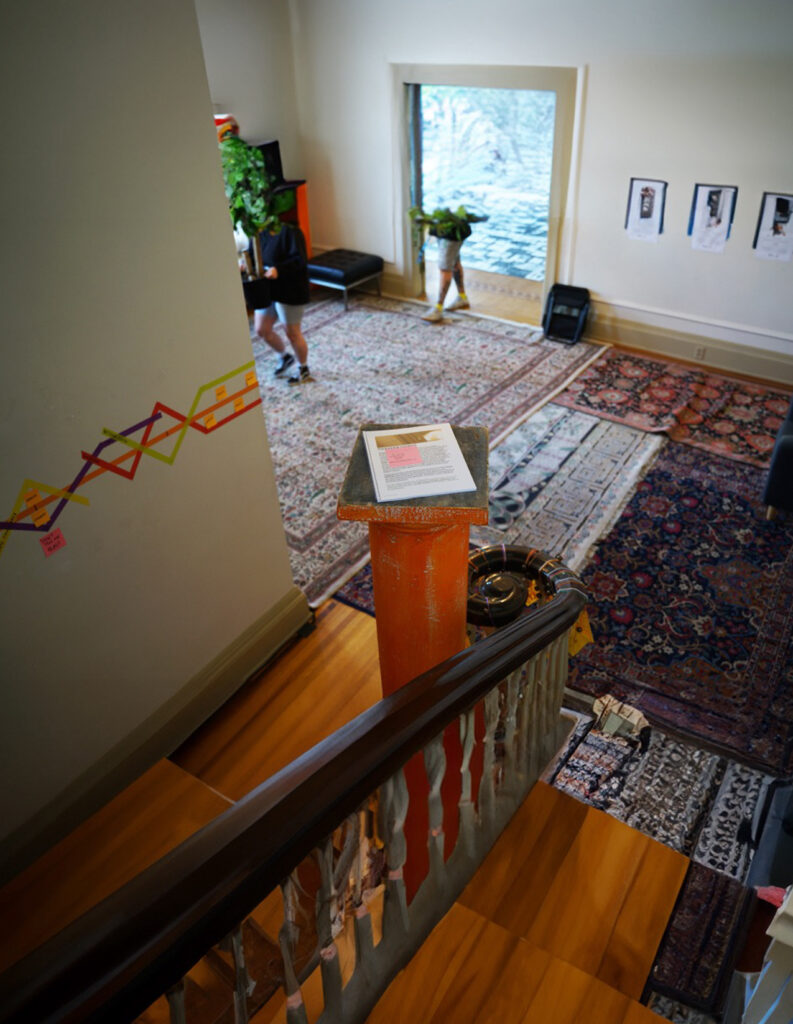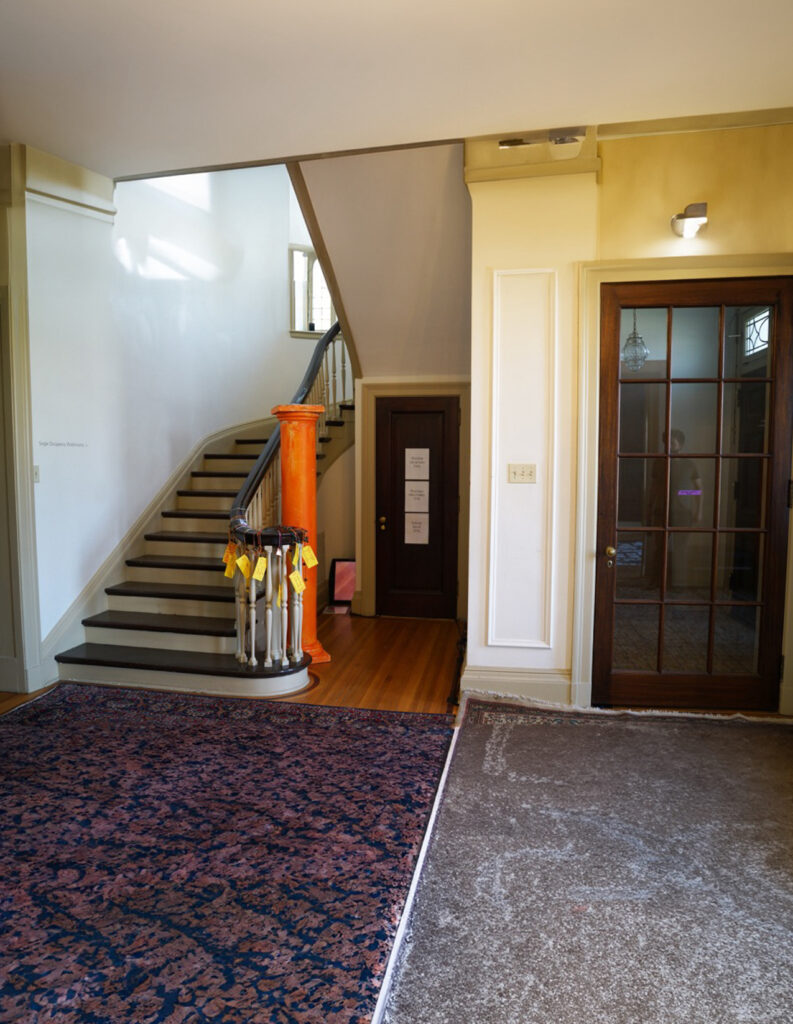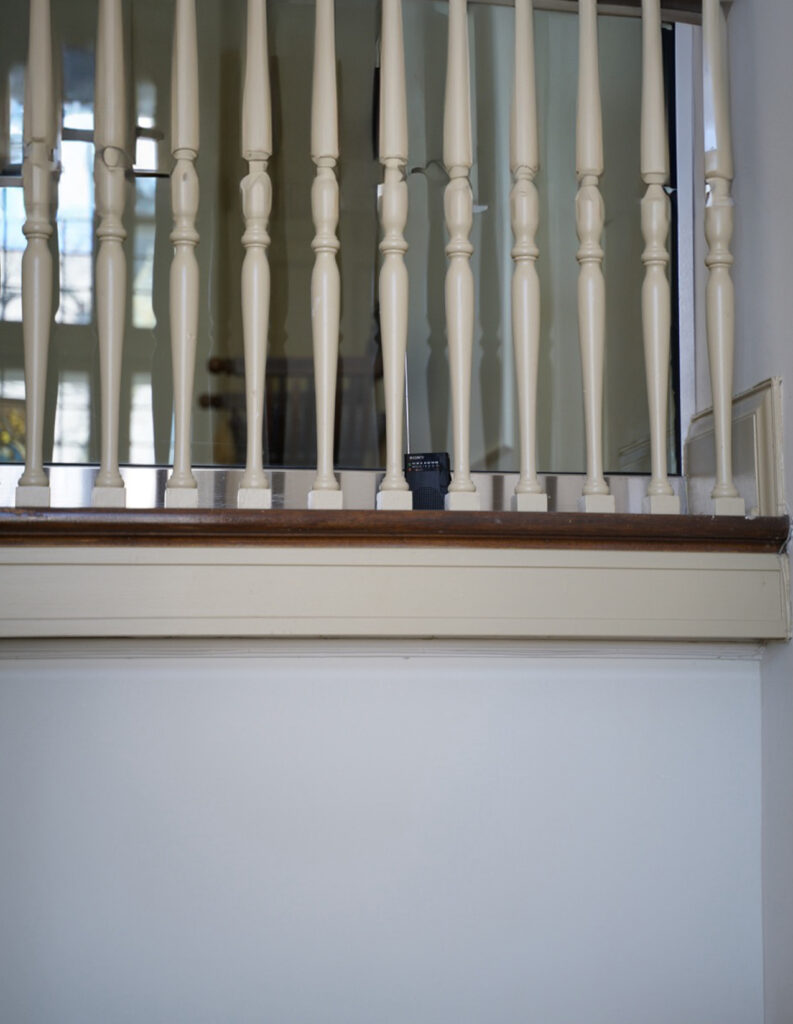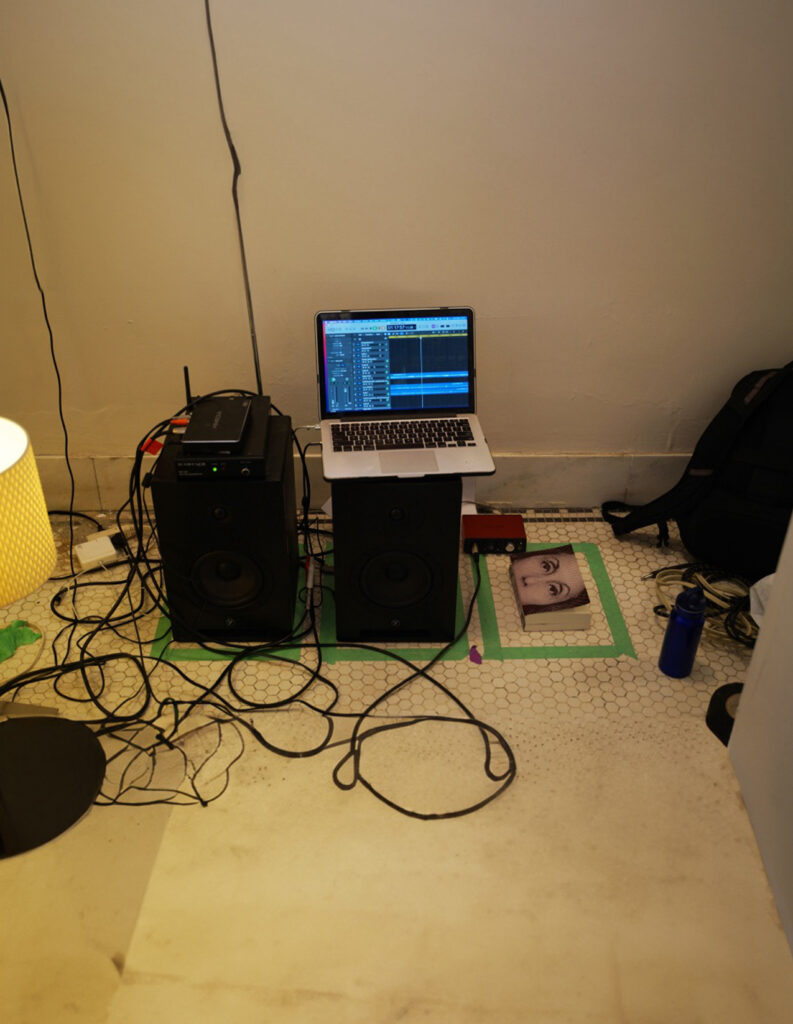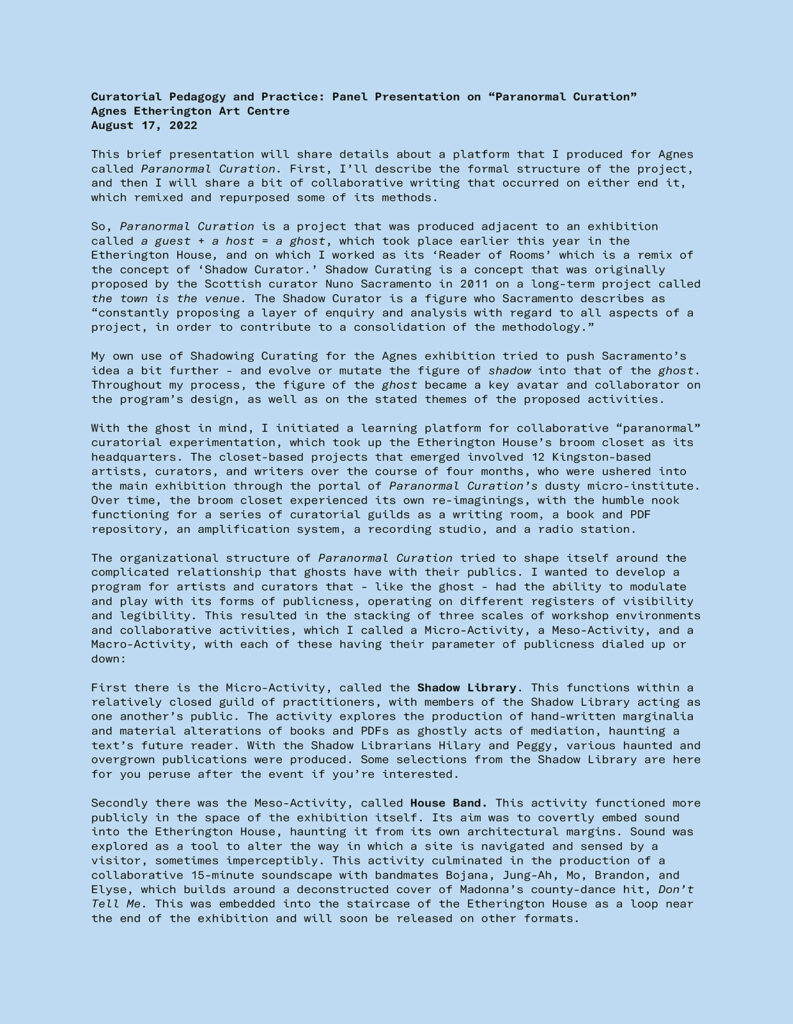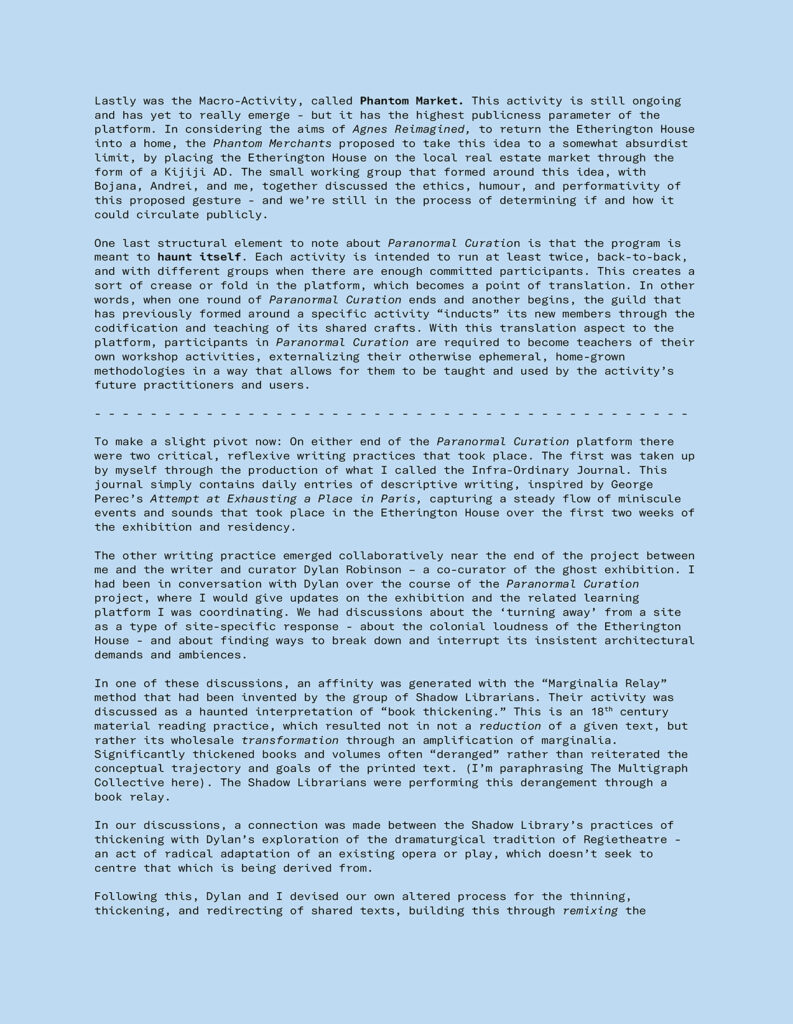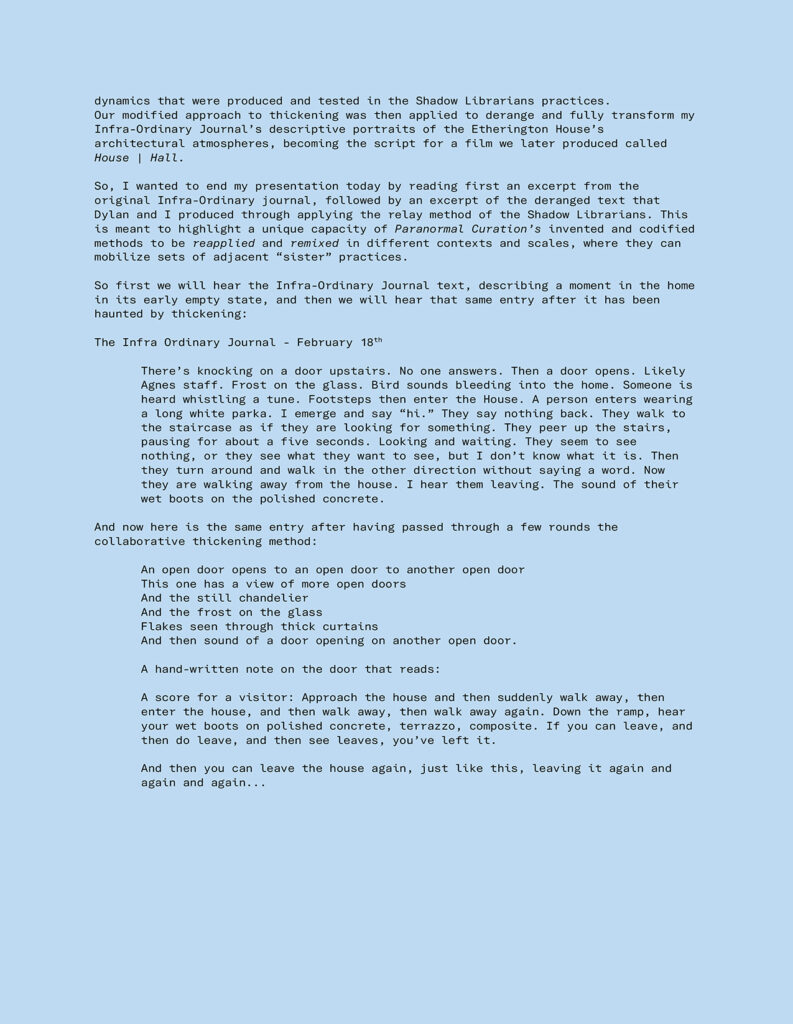a guest + a host = a ghost / Paranormal Curation
Agnes Etherington Art Centre
February 8 – May 8, 2022
Archive of Paranormal Curation research platform + working groups
Paranormal Curation is an open access artistic learning platform, designed as a set of overlapping in-person and online activities that allow for its participants to collectively explore ideas and methodologies of “haunting” through contemporary curatorial practices and alternative exhibition-making formats. The floating platform is designed to work adjacent to existing projects, groups, sites and institutions, with its first iteration in early 2022 stemming from an investigation of the historic Etherington House in Kingston, Ontario – the original site of the Agnes Etherington Art Centre, the University Gallery of Queen’s University. This initial iteration of the platform will aim to build and nurture assemblages of participants drawn from members of two simultaneous art-educational clusters: the Agnes Etherington’s ‘Rehoming Agnes’ Playgroup and Queen’s University’s ‘Situating the Curatorial’ Graduate Seminar. Beyond these core groups, other ‘Wanderers’ will be added to the mix as the platform evolves and transmits itself.
This artistic learning platform was designed as part of my contribution as co-curator to the micro-residency and exhibition project A guest + a host = a ghost at Agnes Etherington Art Centre in Kingston, Ontario, which is situated in the gallery’s historic Etherington House and open to the public from Feb. 8 – May. 8, 2022. The platform’s themes and interest in “haunting” were mobilised through various early discussions with the initiators of that project, including Sunny Kerr, Michelle Bunton, Dylan Robinson and Hadley Howes. A core concern that arose around those discussions was the difficulty and trouble of approaching the Etherington House – fraught as it is with its colonial architecture – as an hospitable site for discursive exhibition practices, artistic production, contemplation, and acts of collective flourishing. It has been continuously discussed and emphasised, from various angles and positions, how the consistent “colonial loudness” of the historic house can not only make it a stifling environment for artistic thinking, but also produces an act of violence and erasure through its insistent Victorian architectural desires. How can we productively work from within such a charged site, as artists, curators, and organisers? How could this place become more hospitable to diverse voices and practices?
